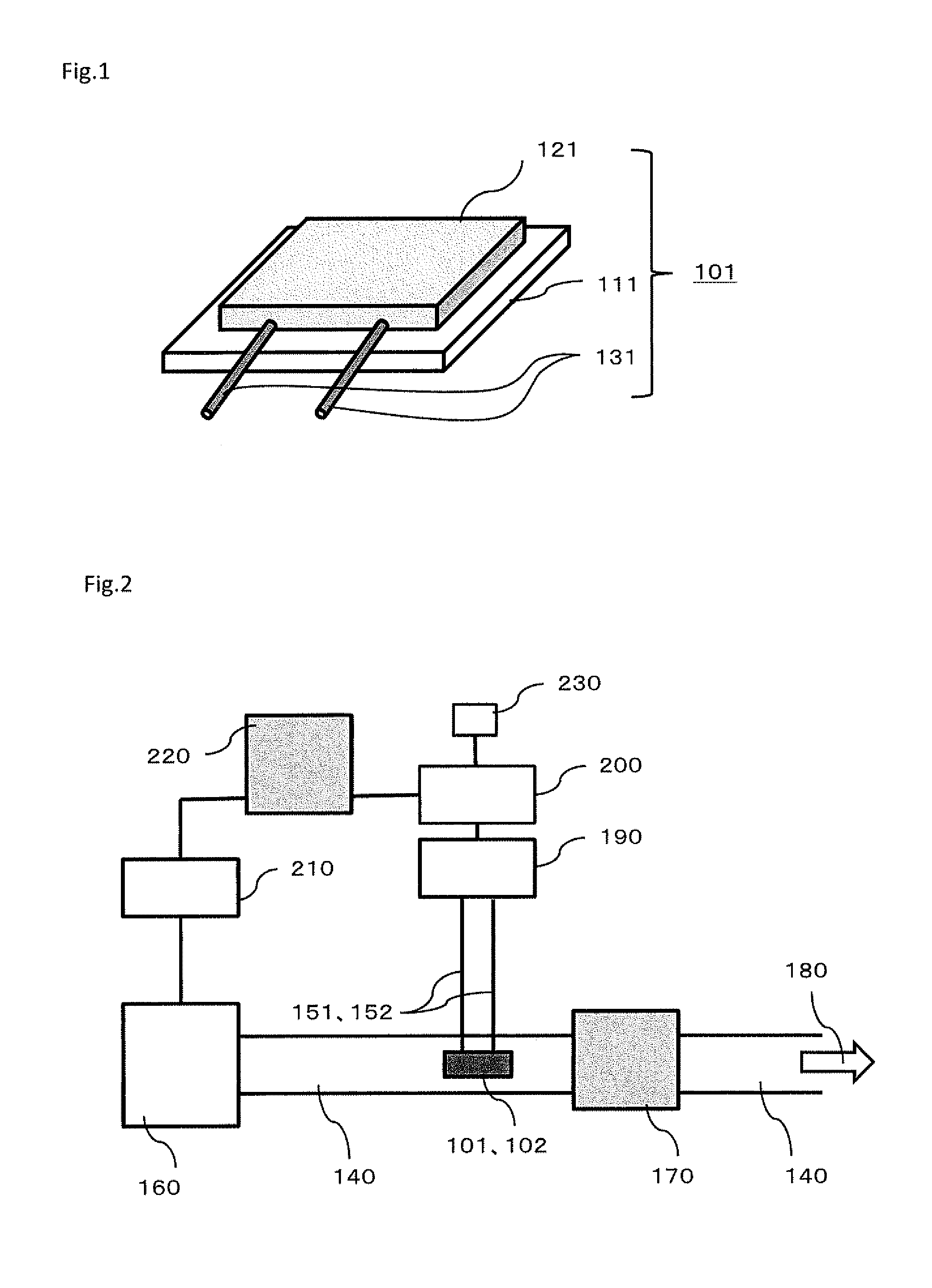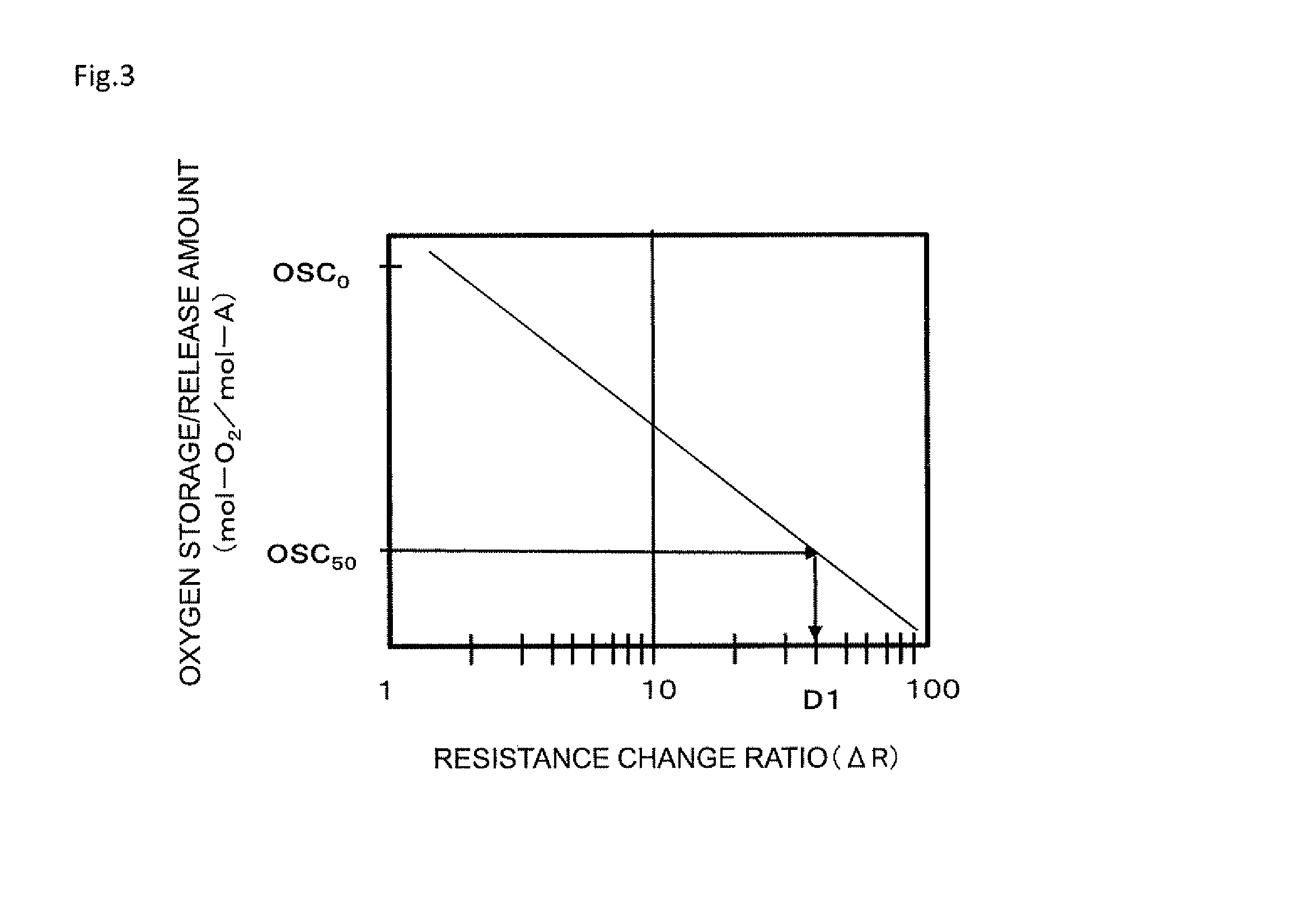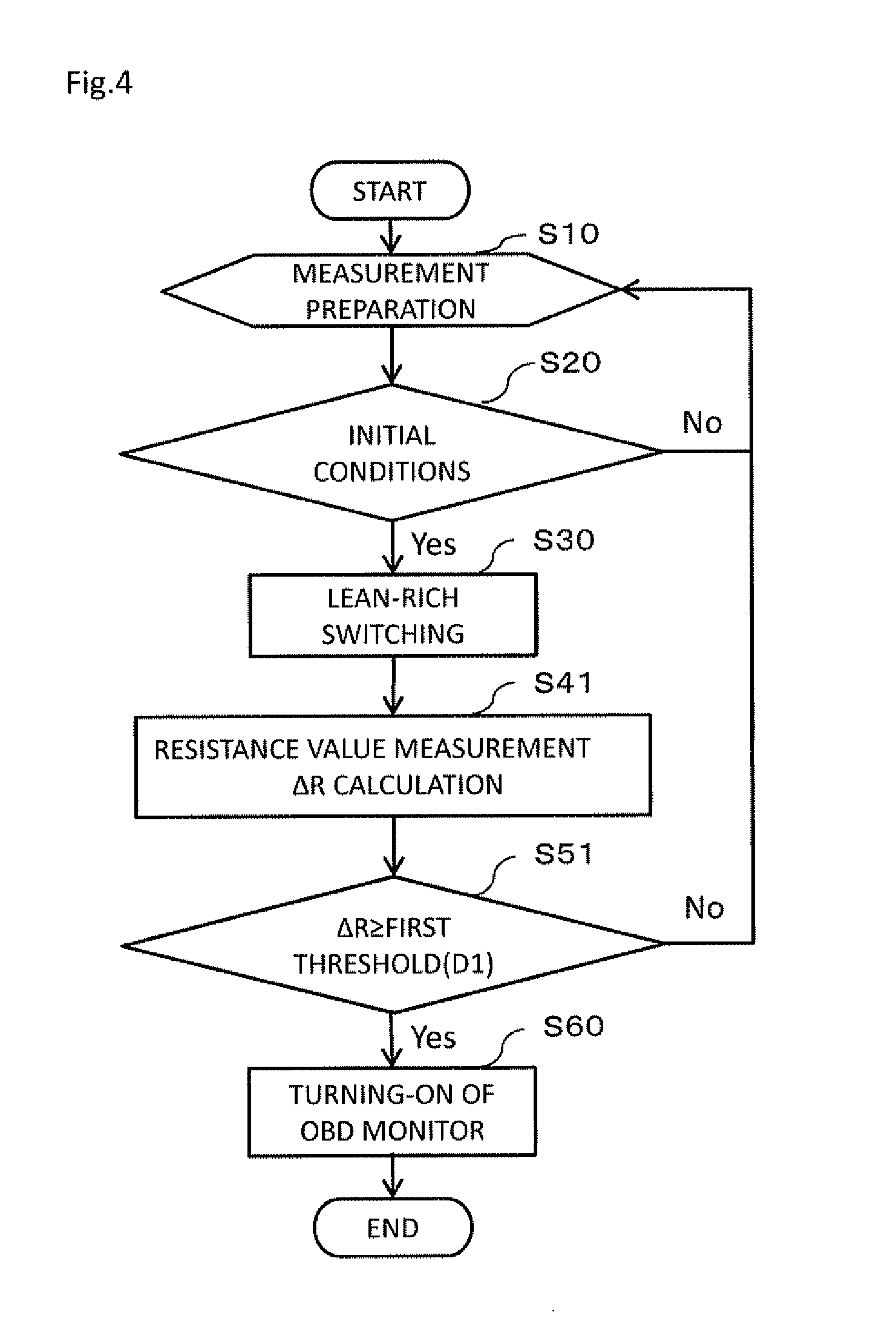Catalyst deterioration diagnosis method, method for purification of exhaust gas using the diagnosis method, catalyst deterioration diagnosis apparatus, and apparatus for purification of exhaust gas using the diagnosis apparatus
- Summary
- Abstract
- Description
- Claims
- Application Information
AI Technical Summary
Benefits of technology
Problems solved by technology
Method used
Image
Examples
synthesis example 1
Catalyst Synthesis Example 1
[0128]In accordance with the method described in Japanese Unexamined Patent Application Publication No. 2009-84061, a catalyst was prepared as follows. Specifically, first, a mixture liquid was prepared by dissolving 49.1 g of an aqueous cerium nitrate solution with a concentration of 28% by mass in terms of CeO2, 54.7 g of an aqueous zirconium oxynitrate solution with a concentration of 18% by mass in terms of ZrO2, and 1.2 g of a nonionic surfactant (manufactured by Lion Corporation, trade name: LEOCON) in 90 cc of ion-exchanged water, and coprecipitation was performed by adding, to this mixture liquid, ammonia water containing NH3 at 25% by mass, so that the amount of NH3 was 1.2 equivalents to the anions in the mixture liquid. Subsequently, the obtained coprecipitates were filtered, washed, dried at 110° C. Then, the coprecipitates were placed in a furnace, and calcined in the air at 1000° C. for 5 hours. Thus, a ceria-zirconia solid solution was obta...
preparation example 1
Catalyst Preparation Example 1
[0131]First, 2 parts by mass of the powder of the ceria-zirconia composite oxide obtained in Catalyst Synthesis Example 1 and 1 part by mass of ethylene glycol (manufactured by Tokyo Chemical Industry Co., Ltd., trade name: Polyethylene Glycol #300) were mixed with each other in a mortar to obtain a uniform paste. Subsequently, a substrate was fabricated by vapor-depositing two Pt wires having thicknesses of 2 mm on an alumina plate of 1 cm square, with the distance between the electrodes being 5.0 mm. The thickness of each of the Pt wires was approximately 200 nm. The paste was applied in a thickness of 0.1 mm onto the substrate, so that the Pt wires were covered with the paste. The paste was calcined in the air at 500° C. for 5 hours. Thus, a catalyst deterioration diagnosis element 1 was obtained. The oxygen storage / release amount of the catalyst (catalyst 1) in the catalyst deterioration diagnosis element 1 was 0.25 (mol-O2 / mol-Ce).
preparation example 2
Catalyst Preparation Example 2
[0132]A catalyst deterioration diagnosis element obtained in the same manner as in Catalyst Preparation Example 1 was subjected to a durability test of heating in the air under a temperature condition of 1100° C. for 5 hours. The catalyst deterioration diagnosis element after the durability test was termed as a catalyst deterioration diagnosis element 2. The oxygen storage / release amount of the catalyst (catalyst 2) in the catalyst deterioration diagnosis element 2 was 0.22 (mol-O2 / mol-Ce). (Catalyst Preparation Example 3)
[0133]A catalyst deterioration diagnosis element 3 was obtained in the same manner as in Catalyst Preparation Example 2, except that the temperature condition of the durability test was 1400° C. The oxygen storage / release amount of the catalyst (catalyst 3) in the catalyst deterioration diagnosis element 3 was 0.16 (mol-O2 / mol-Ce).
PUM
 Login to View More
Login to View More Abstract
Description
Claims
Application Information
 Login to View More
Login to View More - R&D
- Intellectual Property
- Life Sciences
- Materials
- Tech Scout
- Unparalleled Data Quality
- Higher Quality Content
- 60% Fewer Hallucinations
Browse by: Latest US Patents, China's latest patents, Technical Efficacy Thesaurus, Application Domain, Technology Topic, Popular Technical Reports.
© 2025 PatSnap. All rights reserved.Legal|Privacy policy|Modern Slavery Act Transparency Statement|Sitemap|About US| Contact US: help@patsnap.com



